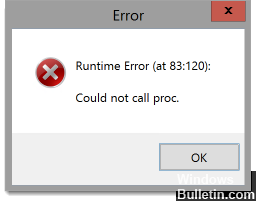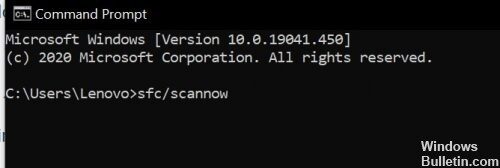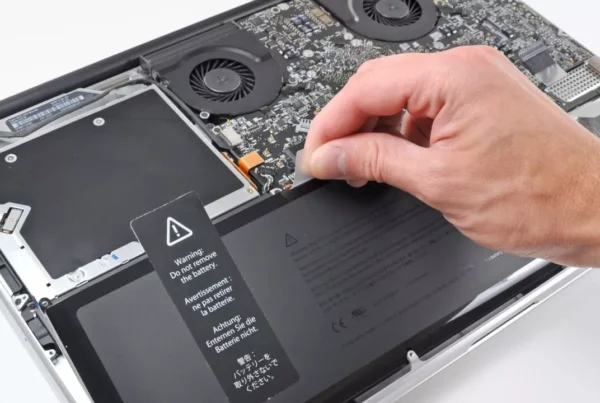RECOMMENDED: Click here to fix Windows errors and get the most out of your system performance
Malwarebytes runtime error is a common hurdle that comes up while installing an application on a Windows computer. How to get rid of the installation problem? Make it easy for yourself. In this post, you will learn the possible solutions to this error.
When you try to install Malwarebytes on a Windows computer, you might see an error window with the error message: Runtime error (at xx:xxx): Failed to call proc.
In most cases, this error is associated with the % TEMP% folder. Malwarebytes for Windows during installation should store files in the % TEMP% folder. If this folder is on the network or RAMDisk (Random Access Memory Drive), a runtime error will occur during the installation of Malwarebytes.
Of course, other factors can also cause a malware execution error: “Could not call proc” issues, such as a corrupted system file, logical errors on the hard drive, etc. Luckily, here are some methods you can try to fix the problem.
What is the cause of the runtime error when installing Malwarebytes (Could not install Proc)?
- Corrupted Malwarebytes installation: If this issue occurred after a failed installation of Malwarebytes, you're probably seeing this error code because you still have files left over from the damaged installation. For this case, you can use the Malwarebytes support utility to delete the remaining files.
- Malwarebytes certificate not trusted: If you're experiencing this issue on Windows 10, you're most likely seeing this error code because your system has classified the security certificate that Malwarebytes requires as "untrusted." For this case, you can fix the problem by using the certificate manager to clear the Malwarebytes certificate and install any pending Windows updates before trying the installation again.
- Corrupted system files: In more severe conditions, you can expect this problem to occur due to some kind of corruption of some Windows files. For this case, the first attempt to fix the problem is to use some built-in utilities that can repair damaged system files (DISM and SFC). If this fails, you should consider repair or a new install.
- The % TEMP% folder is in a different location: It turns out that one of the most common cases where this problem occurs is in a scenario where the TEMP folder is on the network or in RAMDRIVE or RAMDISK, instead of its default location. If this is the case, you should be able to fix the problem by moving the Temp folder to its default location.
- Logical errors on the operating system disk: According to some concerned users, this problem can also occur in situations where the operating system disk contains logical errors that impact its ability to safely save newly created files. For this case, you should run a CHKDSK scan and see if it resolves the issue.
- Residual Malware / Emergency Files: According to the Malwarebytes team's security post, this issue can occur if the operating system disk today stores files that actively prevent the installation of certain security packages. Users who also encountered this issue were able to resolve it by running a scan with a third-party security scanner.
To fix Malwarebytes installation runtime error (Failed to Install Proc)
Reset folder% TEMP% to default folder
As previously mentioned in the reasons, incorrect location of the TEMP%% folder. The folder is usually located in RAMDRIVE, RAMDISK or on the network, not in the original location. For this case, all you can do is move the % TEMP% folder to the desired location and then try the installation procedure again. To do this,
- First, download the latest version of Malwarebytes from the official web portal.
- Now launch the RUN prompt by pressing the WINDOWS + R key combination at the same time.
- Type "cmd" in the empty dialog box and click OK. This will open a command prompt window. If you see the UAC (User Account Control) option, click “Yes” and you will have administrator rights to the command prompt window.
- In the command prompt window, type or copy the following commands one by one and press Enter after each command.
determine TEMP=C: Windows emp
determine TMP=C:mp from Windows
cd “% USERPROFILE% Loads - Once all the commands you have entered have been processed, you can close the command prompt window.
- Now navigate to the Malwarebytes installer executable (which you downloaded in the first step), right-click on it and select Run as administrator from the submenu.
- Now try to install the malware bytes and check if the mentioned issue still occurs and if you get the message “Runtime Error (83:120): Failed to call proc” or not.
Run CHKDSK scan
Any issues with the semiconductor or traditional hard drive may also cause a "Runtime Error (83:120): Failed to call proc" message for some users.
It can also be due to inconsistent data blocks or a logic error. Affected users have attempted to fix this situation by running a CHKDSK scan. To do this,
- First, press WINDOWS + X to open the WinX menu.
- Now, in the WinX menu, click Command Prompt (Admin) to run the extended command line (if you see the UAC (User Account Control) option, click Yes to give yourself administrator privileges in the prompt window). the command line).
OR
- Launch the RUN prompt and type cmd in the empty dialog box, then click OK. A command prompt window will open. If you see the UAC (User Account Control) option, click Yes and you will have administrator access to the command prompt window.
- Now type Chkdsk X in the command prompt window:
NOTE: Here, "X" is the drive letter that corresponds to the partition on your computer's hard drive (that you want to scan with CHKDSK). Below are the parameters you want CHKDSK to use to perform the scan. After that, press the Enter key.
When running the CHKDSK utility from the extended command line, you can use any of the following parameters:
/f – Tells CHKDSK to fix any errors it finds.
/r – Tells CHKDSK to look for bad sectors on the drive and try to recover all readable information from those sectors.
/x – Tells CHKDSK to forcibly disconnect the chosen drive before scanning it.
- The last command you enter on the extended command line is the following:
Chkdsk D: /f /x (if you want CHKDSK to shutdown drive D on your computer and then check for and fix errors).
OR
Chkdsk C: /f (if you want CHKDSK to check your C drive for errors and try to fix them).
- Now, wait for the CHKDSK scan to finish. After that, it will try to fix most of the errors available on your system. After that, try to install the malware bytes and see if the issue is resolved or not.
Note: The above method works on Windows 7, 8, 8.1 and 10.
Perform SFC and DISM scans
Most likely you are dealing with some kind of system corruption which further causes “Execution Error (83:120): Failed to call proc” issue. For this case, it is recommended to run SFC and DISM scans sequentially. This is done in the following way,
To scan the SFC:
- First, open a command line window. Make sure to open it with administrator privileges.
- Now type “sfc /scan now” in the Command Prompt window and hit Enter. It will run a scan for corrupt or outdated system files.
Note: The SFC scan is completely local and does not need an Internet connection to work. However, to do a DISM scan, the user requires a stable Internet connection.
To do a DISM scan:
- First, open a command line window. Make sure to open it with administrator privileges.
- Now enter the following commands in the Command Prompt window and hit the Enter key for each of them:
Uninstall / Online / Clean-Image / Check-Health
Uninstall / Online / Clean Image / ScanHealth
Uninstall / Online / Clean-up-Image / ScanHealth
- The scanning procedure may take some time, so please wait a bit and let the scanning procedure take care of itself.
- If you have successfully completed both scans, try installing Malwarebytes and see if the error “Run-time error (83:120): Failed to call procedure” is fixed or persists.
Fix certificate issue
If your computer reports that the Malwarebytes certificate required to install the tool is an untrusted certificate, this can sometimes cause a "Runtime Error (83:120): Failed to call proc" message .
In such a scenario, it is recommended to delete the entry related to malicious bytes from the list of untrusted certificates through the Certificate Manager utility. To do this,
- Open the RUN prompt and enter "certmgr.msc" in the empty dialog box and click OK. This will take you to the Certificate Manager utility. If prompted to use UAC (User Account Control), click “Yes” to allow administrative access.
- Now, in the Certificate Manager window, go to the left menu and select the Untrusted Certificates option. Next, double click on the certificates that appear in the menu on the right.
- Then scroll down the list of certificates, right-click each entry associated with the malicious bytes, and select Delete.
- After deleting all entries related to Malwarebytes, update the available Windows updates and reboot the system.
- After a successful system reboot, try installing Malwarebytes and see if the issue is resolved or if it persists.
These are all possible solutions to help you fix “Malwarebytes Installation Error: Failed to Call Proc” issue. This problem can be due to many reasons, but since it has been around for a long time, there are several reliable solutions.
RECOMMENDED: Click here to fix Windows errors and get the most out of your system performance








